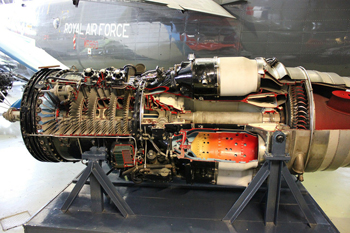CADORS: Technical Concepts
Prof. Franck Tancret*

Nickel-based superalloys
Nickel is a metal. It is used, for instance, as an alloying element (meaning it is mixed with other metals) in some coins (like in the 1 € and 2 € coins), and in most stainless steels when added to iron along with chromium.
In stainless steels, nickel is in minority (e.g. 10%) compared to iron. But, when used as the main element, such alloys can become extremely strong and corrosion resistant up to temperatures as high as 700°C, of even up to more than 1000°C, which is not the case of steels. This gives them their name of “superalloys”, which are not, in fact, alloys with a cape and a mask!

With such properties, nickel alloys are used in applications where high temperatures, high stresses and corrosive environments are to be faced simultaneously, for instance:
- In the hot areas of aeroengines:

- In power plants:

- In chemical engineering and in the oil & gas industry:

To achieve such properties, nickel has to be alloyed (mixed) with other elements like chromium, iron, cobalt, molybdenum, tungsten, aluminium, titanium, niobium, tantalum, rhenium, carbon, boron...
Design of new nickel-based superalloys
All the above-mentioned elements have an influence on alloy properties, but they interact with each other! Designing a new alloy means finding the combination of elements, and their proportions, which will bring the desired properties, and if possible at the lowest possible cost (for instance, rhenium is an efficient strengthener, but it is more expensive than silver...).
In addition to the “applicative properties” already listed (resistance to mechanical loads at high temperature in corrosive environments), alloys must be easy to fabricate, to process, to join, etc.
Most nickel alloys are fabricated by first casting them, and then by hot working (rolling, forging...). The latter needs the alloy to be malleable, or ductile. Also, many applications require alloys to be welded.
Unfortunately, the general trend is that the stronger an alloy is, the less ductile it is and the more difficult it is to weld!
This indicates another difficulty of alloy design: everything is often a matter of compromise, or “trade-off”, between antagonistic alloy characteristics: several processability issues, several applicative properties... and cost... a damn puzzle given the fact that the influence of composition on each of these characteristics is complex and with interactions.
Computer-aided design of new alloys
To tackle this complex problem, we use a set of computing tools:
- - Models that are able to predict the properties of alloys as a function of their composition. For this we have developed and assessed several models, based either on physical concepts or on the analysis of existing data on superalloys. We are still working, in the CADORS project, on the development of new models, among others to predict some processability or environmental resistance characteristics (follow this link to find out more).
- - Optimisation of composition to reach the set of desired characteristics while taking into account all the design requirements simultaneously and dealing with the associated “trade-off”. This is called “multi-objective optimisation”, and for this we use amazing computing tools called “genetic algorithms”!
To go back to the main page, click here!
* Contact:
Franck Tancret
Université de Nantes
Polytech Nantes
Institut des Matériaux de Nantes – Jean Rouxel (IMN)
BP 50609
44306 Nantes Cedex 3
France
+33 (0)2 40 68 31 97
franck.tancret@univ-nantes.fr
www.univ-nantes.fr
